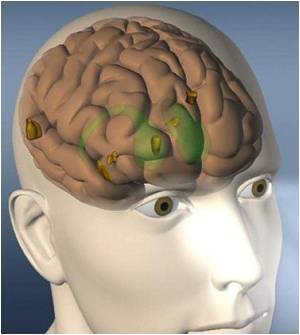US scientists have identified the mechanism behind the death of the brain cells in Parkinson patients.

Just 5 percent of Parkinson’s disease cases can be explained by genetic mutation, while the rest have no known cause. But a new discovery by researchers at The University of Texas Health Science Center San Antonio may begin to explain why the vast majority of Parkinson’s patients develop the progressive neurodegenerative disease.
After analyzing cells and post-mortem brain tissue from animals and humans, the scientists noted that oxidative stress — a known culprit in neuron death — activated a protein called tyrosine kinase c-Abl in the nigra-striatum area of the brain. Neurons in this part of the brain are particularly vulnerable to Parkinson’s injury.
Activation of this protein led to changes in another protein called parkin, which is known to be mutated in hereditary Parkinson’s. The altered parkin lacked the capacity to break down other proteins, leading to harmful clumps of unprocessed protein in the neuron. The scientists believe this accumulation leads to progressive neuron death, resulting in Parkinson’s symptoms that worsen over time.
“When we blocked tyrosine kinase c-Abl activation, parkin function was preserved and neurons were spared,” said Syed Z. Imam, Ph.D., adjunct assistant professor at the UT Health Science Center.
“We believe these studies provide sound rationale for moving forward with a preclinical trial of tyrosine kinase c-Abl inhibitors, with the goal of developing a potent therapeutic drug for slowing the progression of Parkinson’s.”
Advertisement
Tyrosine kinase c-Abl inhibitors are approved by the FDA for treating myeloid leukemia and gastrointestinal tumors. This could speed approval of the drug for Parkinson’s and its translation from bench research to clinical practice.
Advertisement
“The race is on to understand the mechanism of the 95 percent of Parkinson’s cases with no known cause, and our finding certainly is a building block,” Dr. Imam said. “We have found a specific signaling mechanism that is only turned on by oxidative stress and is selective only to Parkinson’s-affected neurons of the nigra-striatum, which is the area that sends signals for balance to the cerebellum.”
Further studies could lead to a diagnostic test that could screen for Parkinson’s years before symptoms develop, said Syed Z. Imam, Ph.D., adjunct assistant professor at the UT Health Science Center.
Parkinson’s disease, which usually is not diagnosed until age 60 or later, affects an estimated half-million people in the United States.
Source-Medindia











